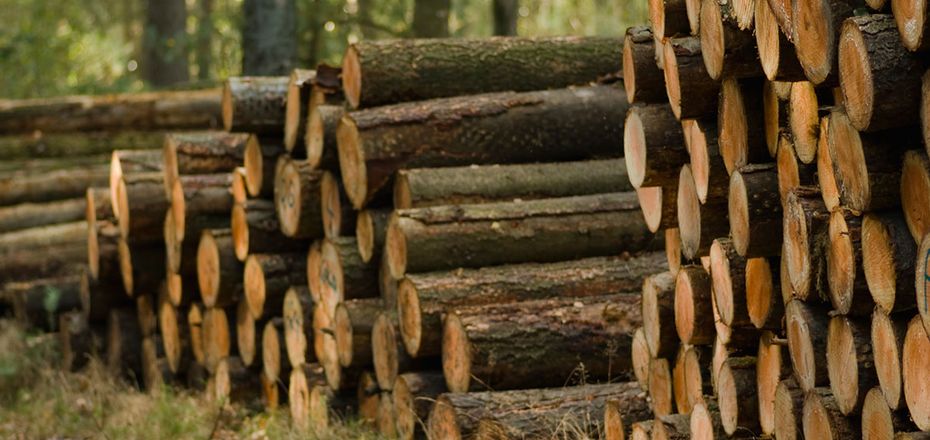English
A VERY SPECIAL FOREST
The Lenneberg Forest is very different from most other german forests. It is situated in a dunelike area composed of sanddunes of pleistocene origin. Directly adjacent to the forest is the Nature Reserve "Mainz Sanddunes", which is considered to be one of the most valuable Nature Reserves in Europe. The soil, consisting mainly of pure sand, can only retain very little amounts of water and nutrients. Because of this and the mild and dry climate of the Upper - Rhine - Valley it shows a remarkable and widley know steppe vegetation characterized by a great number of continental and submeditteraen plants and animals. Because of the high temperatures and the dryness of the area the most common natural forest type in Germany, the mixed - stand - beech forest, cannot grow here. The Lenneberg Forest is dominated by common Pine (Scots Pine) and Oak. Historically human influence has fostered the pine by such means as the grazing of sheep and goats, who favoured deciduous trees over the pine. Pine trees wew also planted being some of the few trees capable of growing in the sandy soil. Also the remaining broad - leaved trees were preferred as fire - wood over the fast burning pine, further increasing the dominion of the pine. The historic influences were fundamental in creating the special conditions that this forest presents to us today. The light crown - cover allows a great variety of dry turf plants to grow beneath the trees. Many of these plants can be found in the "Red List of Endangered Species", because the specific conditions that they require are increasingly hard to find in Germany But not only the members of the plant kingdom show this exceptional quality, many of the animals that have made these woods to their home are also threatened by extinction. Because of 1st role as a refuge for endangered species, the Lenneberg Forest is in the process of being declared a natural reserve by the state of Rhineland - Palatine.

RECREATION
in the Lenneberg Forest The Lenneberg Forest with only 700 hectare is the largest forest in the intensively agricultural Rheinhessen. It is the preferred recreational area and is visited by nearly a million people annually, accompanied by close to 90000 dogs. This makes it one of the , if not the most frequented forest (per ha) in all of Germany. Consequently this fragile enviroment is heavily burdened. Parts of the forest are crisscrossed by a network of small paths, making an unhindered development of plants and animals impossible. Litter, rubbish, air pollution (The forest is located next to the highway !) and dog excrements change the makeup of the plant communities. Research into the damaging effects of and financed by the various public forest-land owners (City, Rural District, Community and State). On the basis of the interdisciplinary research conducted by the University of Mainz, the Lenneberg Forest will soon be declared a nature reserve. A care.- and development plan regulates the care , tree species selection, development of the pine health and directing the flow of the forest visitors. For the protection of the sandflora and fauna in the east and the west of the area, the pine - cathedral forest with shrubs and few light - transmissible broadleaved trees such as oak and cherry are to be preserved or developed. In the central part of the forest, traditionally the focal point of the recreational activity, is going to be further developed with the goal of channeling the flow of visitors away from the more fragile biotops. Varied mixed deciduous forest types with such trees as beech, maple, linden, cherry and wild service tree (Elsbeere) amongst others are favored.
FORESTRY
in the Lenneberg Forest The primary goal of forestry in the Lenneberg Forest is the safekeeping and stabilizing of vulnerable pine stands. Like few other trees, the pine is threatened by a host of external dangers such as wind and snow breakage, forest fires and often as a direct result of all this , is set upon by a massing of harmful insects. Various bark beetles and needle eating caterpillars of different moths are worth mentioning. Despite of the low water requirements - compared to other trees- the pine also suffers greatly in dry years for insects. If the pines are weakend by several years of extreme dryness, young trees become susceptible to infestation with a lethal fungus, older trees vulnerable to misteltoe infestation, often leading to the death of the affected trees. In order to stabilize the young forest stands, it is necessary to thin them out periodically. The resulting timber is hauled out of the forest with forestry tractors or with the help of horses and sold to the wood processing industry. Nonetheless timber production is not the goal in the Lenneberg Forest, but rather a side effect which can help cover some of the costs of managing the forest. These costs include the building and maintenance of installationsfor recreation such as huts , a grill hut, benches fitness trail etc.and the removal of refuse. Information about the forest is made available trough the forest ranger, information boards, nature trail, numerous guided tours and the annual forest youth games.
